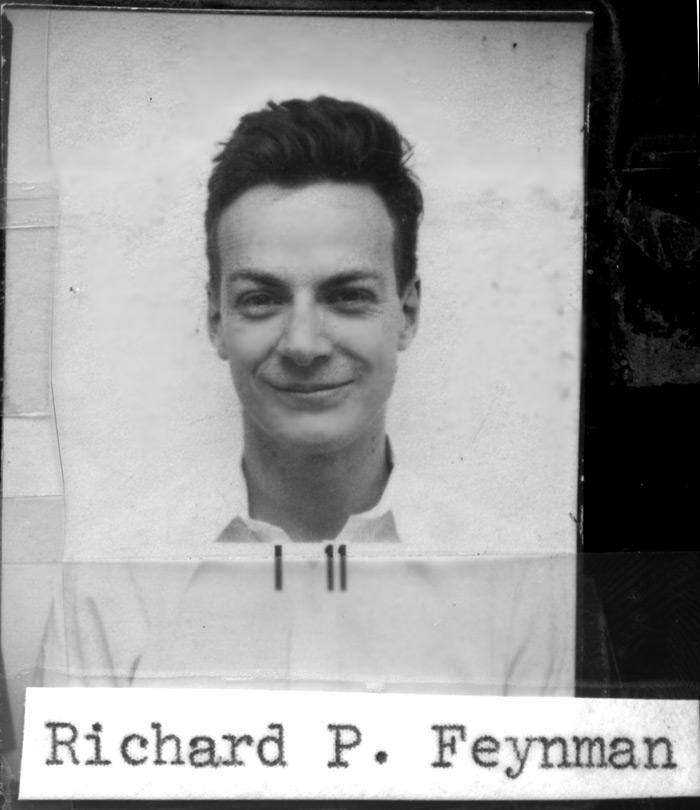Richard Feynman (1918-1988) was an American theoretical physicist who received the Nobel Prize in 1965.
Robert Wilson recruited Feynman, only 24 at the time, for the Manhattan Project as a junior physicist soon after completing his Ph.D. At Los Alamos, Feynman was assigned to the theoretical division of Hans Bethe, and soon became a group leader. Feynman was briefly transferred to the Oak Ridge facility, where he aided engineers in calculating safety procedures for material storage so that inadvertent criticality accidents could be avoided. He was well known for playfully challenging the security at Los Alamos, and was present for the Trinity test in 1945, viewing the explosion through his truck windshield.
After the Manhattan Project, Feynman regretted not reconsidering his work after Germany was defeated in World War II, although he continued to feel that the threat of a nuclear-armed Nazi Germany was enough to justify his initial participation. He turned down an offer from the Institute for Advanced Study and joined Hans Bethe at Cornell from 1945 to 1950, where he taught theoretical physics. Feynman left to join the faculty at Caltech in 1950. There he conducted his groundbreaking research in areas of quantum electrodynamics and superfluidity.
Scientific Contributions
Feynman won his 1965 Nobel Prize in Physics for his work in quantum electrodynamics, a formula well known for its accurate predictions, which combines his path integral formulation and his Feynman diagrams. Additionally, he worked in the fields of the physics of superfluidity and quantum gravity, and developed a model of weak decay.
He also played a notable role on the Rogers Commission to investigate the 1986 Challenger space disaster, determining that the faulty O-ring caused the accident.





